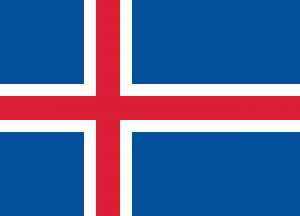Language/Icelandic/Grammar/Adverbs-Formation
Adverbs are an essential part of any language. They modify verbs, adjectives, or other adverbs to give context to a sentence. Adverbs describe time, manner, degree, and frequency. They answer questions like "when?", "where?", "how?", and "how often?". This lesson will focus on how to form and use adverbs in Icelandic, including their placement in sentences and common adverb vocabulary.
Adverb Formation
In Icelandic, adverbs are usually formed by adding the suffix "-lega" to an adjective. This suffix is equivalent to "-ly" in English. For example, the adjective "löng" (long) becomes the adverb "lönglega" (longly).
Another way to form adverbs is by adding the suffix "-lega" to a noun. This suffix is equivalent to "-ly" in English. For example, the noun "mikið" (much) becomes the adverb "mikiðlega" (muchly).
However, not all adverbs in Icelandic are formed this way. Many adverbs are irregular and must be memorized. For example, the adverb "mjög" (very) does not follow the usual adverb formation rule.
Below are some examples of adverb formation:
| Icelandic | Pronunciation | English |
|---|---|---|
| hægt | hait | slowly |
| strax | straks | immediately |
| vel | vel | well |
| hratt | hrat | quickly |
Adverb Placement
In Icelandic, adverbs can appear in different parts of a sentence. Generally, the adverb should be placed as close as possible to the word it modifies.
When an adverb modifies a verb, it usually appears after the verb. However, some adverbs can appear before the verb for emphasis.
- Before the verb: "Mjög ég elska Ísland" ("Very much I love Iceland").
- After the verb: "Ég elska Ísland mjög" ("I love Iceland very much").
When an adverb modifies an adjective, it appears before the adjective.
- "Mjög fallegt hús" ("Very beautiful house").
When an adverb modifies another adverb, it usually appears before the adverb.
- "Mjög vel gert" ("Very well done").
Common Adverbs
Below are some common adverbs in Icelandic:
- mjög (very)
- strax (immediately)
- vel (well)
- afar (very)
- oft (often)
- aldrei (never)
- alltaf (always)
- líka (also)
- enn (still, yet)
- því miður (unfortunately)
Practice
Translate the following English sentences into Icelandic, using the appropriate adverb:
1. She speaks slowly. 2. He works quickly. 3. They are always happy. 4. We never go to bed late. 5. You are still here.
1. Hún talar hægt. 2. Hann vinnur hratt. 3. Þeir eru alltaf glaðir. 4. Við förum aldrei seint að sofa. 5. Þú ert enn hérna.
Conclusion
Congratulations! You have learned how adverbs are formed in Icelandic, where to place them in sentences, and some common adverbs. Keep practicing to improve your understanding and usage of adverbs in Icelandic. In the next lesson, we will learn about verbs in Icelandic.

